Commuting by bike has several advantages, it can save money, get you there quicker, plus give a useful bit of exercise. I’ve been commuting into Oxford for the past 13 years. It’s not a long commute – only about 2.5 miles each way. Despite the stress of dodging Oxford buses and taxis, commuting by bike is a great way to start the day. Even when I started working from home, I found in practise I preferred to keep commuting into a city centre cafe – rather than stay at home. More than anything a 10 minute cycle ride is a great way to get the brain working.
Over the past 13 years, the main change I’ve noticed is that I’ve become a slightly slower and more patient commuter, but as a result probably enjoy the experience more.
These are my top tips for commuting by bike.
1. Patience. Depending on the city, commuting by bike is likely to be significant faster than most other forms of transport. To a large extent, you can escape the traffic congestion and queues of traffic.
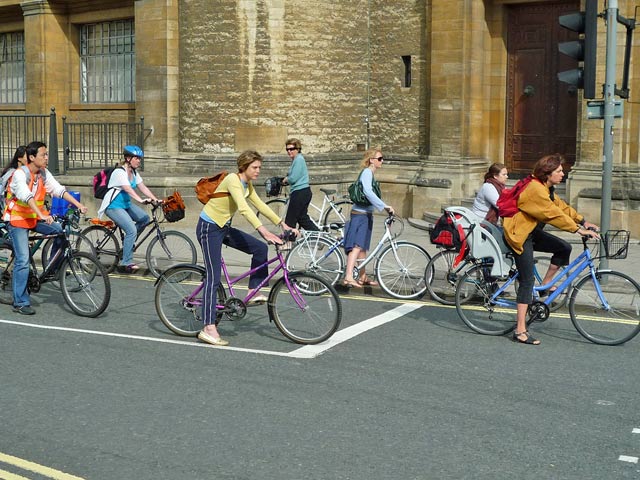
However, it is not a race, if you have a little patience, you can make the ride less stressful and safer. Running red lights is dangerous and can end up leaving you with a fine. You will also annoy a lot of people – both motorists and other cyclists. If you give yourself a little more time, you won’t feel the need to push on regardless. Similarly, if you have a little patience, you won’t take unnecessary risks like squeezing inside buses to save a few seconds. It’s potentially very dangerous. Having a little patience also make the commute more enjoyable. If you treat the commute like a time trial, you are creating unnecessary stress, and you will probably end up riding like an idiot. I’ve nothing against cycling fast, but doing it up the High Street with buses and innumerable traffic lights, is not the best of places.
2. Check different routes
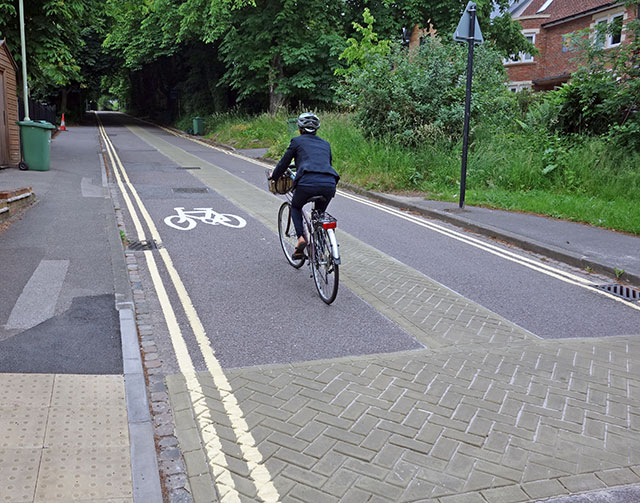
Any commute can be made a little safer and more enjoyable by seeking out quieter roads and better journeys. If there is a nasty section of road or junction, investigate whether it is worth a detour. Planning alternative routes may add a little to your journey distance, but if it makes it safer and less stressful, it is worth it.
Be seen

In an ideal world, cyclists wouldn’t have to dress up like a Christmas tree to be seen. I’m not a fluorescent yellow evangelist, but it does worry me when I see cyclists wearing only dark clothes at night without lights. If you ride on the road without lights and in dark clothing, it really increases the risk of an accident. Also it annoys other road users. If you spend any time driving, you will understand the importance of cyclists being visible.
Be a considerate road user
In any commute, you will come across irritating and inconsiderate behaviour. This will be from any road user, be it pedestrian / car / bus / lorry driver / cyclist. You can not influence how other road users behave. But, the best thing is always to be considerate yourself. If you are considerate and use your common sense, you won’t get into needless dispute, but find it is quite easy to obey the highway code.
Dealing with road rage
Unfortunately, being a considerate road user doesn’t insulate you from all problems. If you commute anywhere in the world, you will face dangerous moments, which are out of your control. It is easier said than done, but there is a lot to be said for keeping calm and not getting drawn into arguments you can’t really win. My general philosophy is generally to have low expectations and let little irritations go. Of course, it is different if you are involved in an accident. In that case, you should take down all the details you can. But, I never expect the advanced cycle boxes to be free. I expect cars to turn into the road, making you slow down. I’m half expecting cars to be on the wrong side of the road. This is all the downside of commuting into town. But, it’s a lot easier to accept as long as you don’t feel it is your responsibility to educate all the car drivers in your city because you won’t be able to!
Maximsing safety
The perceived safety of cycling is often the biggest deterrent to cycling in cities. To some extent you can reduce certain dangers and risk. The big ones include:
– Avoid undertaking buses and lorries – unless you are very certain they are going to be stationary.
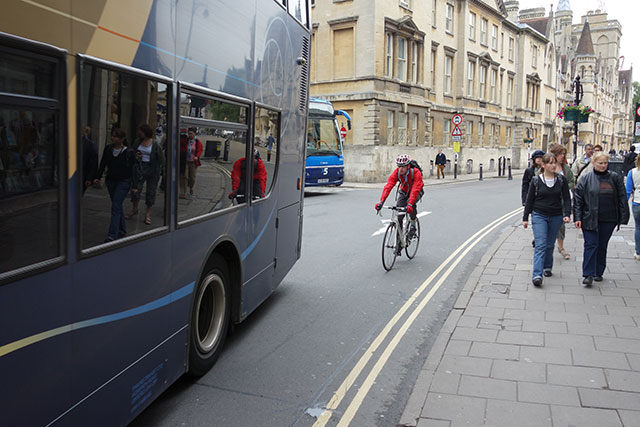
– Learn to look over your shoulder and signal before manoeuvring out into the road.
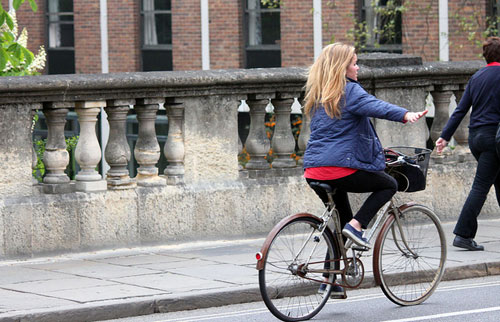
– Don’t just follow what another cyclist does! It might sound strange, but often you see cyclists ‘following the leader’ – one cyclist undertakes a bus, and so others follow suit. One cyclist goes through a red light, and it is more likely others follow suit. Just because someone else does something doesn’t mean it is good for you.

– Pick a decent part of the road. Riding in the gutter is not always the safest place, especially if it means you have to suddenly overtake things parked in your cycle lane. There are times when it is necessary to take the lane. Direct Gov have good advice and recommend:
- Ride positively and decisively but avoid over-confidence
- look and signal before you start, stop or turn
- ride well clear of the kerb – 1 metre away or in the centre of the left lane
- make eye contact with drivers to let them know you have seen them
- acknowledge any courtesy from drivers
- ride a car-door width away from parked cars (Direct Gov link)
- See also: Riding 1 metre from the edge of the curb
– Be prepared to stop. I consider myself a very experienced cyclist. I race on dual carriageways e.t.c. but when commuting I sometimes still stop and cross the road like a pedestrian rather than try and turn right across two lanes of traffic. I may have the ‘right’ to try and move across two lanes, but theory and practise are often different things.
– Anticipate. The secret of commuting. Always anticipate problems before they occur. Being alert is important.
Training and commuting
Commuting can be an excellent addition to a training programme. For a time strapped cyclist, it can a good way to get some low level training in. Because my commute is fairly short, I see it only as recovery riding. 15-30 minutes of spinning the legs; this helps to loosen the legs after a long ride. It is better than a day off. The result is that when commuting I ride slowly and pedal a high cadence. I don’t get involved in any commuting racing or riding fast. The advantage of this is that I arrive in town without really sweating!
If your commute is long, it can be a good way to get the miles in. But, if you commute a long way, it can be difficult to do top level intervals. Sometimes commuting can be a pain, if you’re just piling in junk miles and are too tired to do high level intervals.
Equipment for the commute
All weather commuting I cycle in all weathers. You need only a rear wheel mudguard, good rain jacket and a pair of waterproof trousers. A rear mudguard is essential for keeping your back clean. (I use a simple clip on) You don’t need to spend a fortune on a rain jacket for a commute. Though if it is a long commute, you want to make sure it is fairly breathable. There will be a good choice of waterproof jackets in any cycle shop, for example – this Altura Night Vision jacket
Puncture resistance tyres I don’t carry a puncture repair kit so I want to get as few punctures as possible. I don’t mind slow heavy wear for commuting, puncture resistance is highest on the agenda. I’m currently using Schwalbe Durano Plus on the rear and an Specialized Armadillo on the front. I’m lucky in that there are several bike shops in Oxford and along my commute, so if I do puncture I can drop off bike and get a bus.
Bike choice. Bike choice is quite an individual thing and this is a post in its own right. I use an old Trek road bike customised with panier rack and mudguards. It looks a bit battered, which helps to avoid theft, but is quite quick. I run 25′ tyres, which is OK, though in the icey weather, I wished I had a mountain bike. The most popular commuting bike are the hybrid bikes, which tend to be the best value because they are sold in such large quantities. There are also merits of fixed gear and folding
Good lock. Goes without saying. I have also avoided temptation to buy a better bike with the theory a bit of a battered old bike is less attractive to the determined thief.
Panniers vs Rucksack
I started cycling using rucksack. But, after a while I got fed up of carrying the weight on my back. When I invested in some panniers, I never went back.
See more at: Backpack vs Panniers
Related

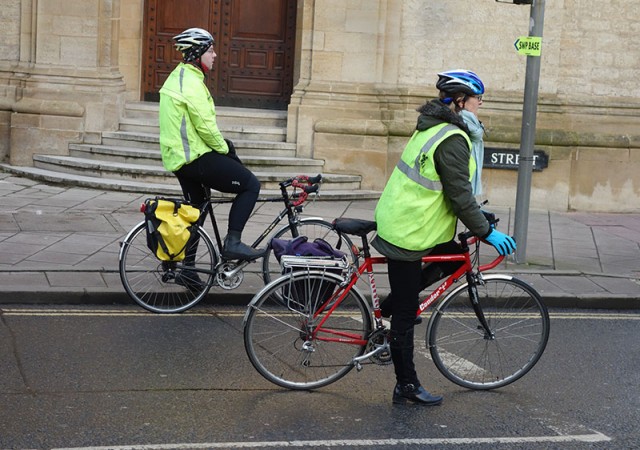
6 thoughts on “Tips for commuting by bike”